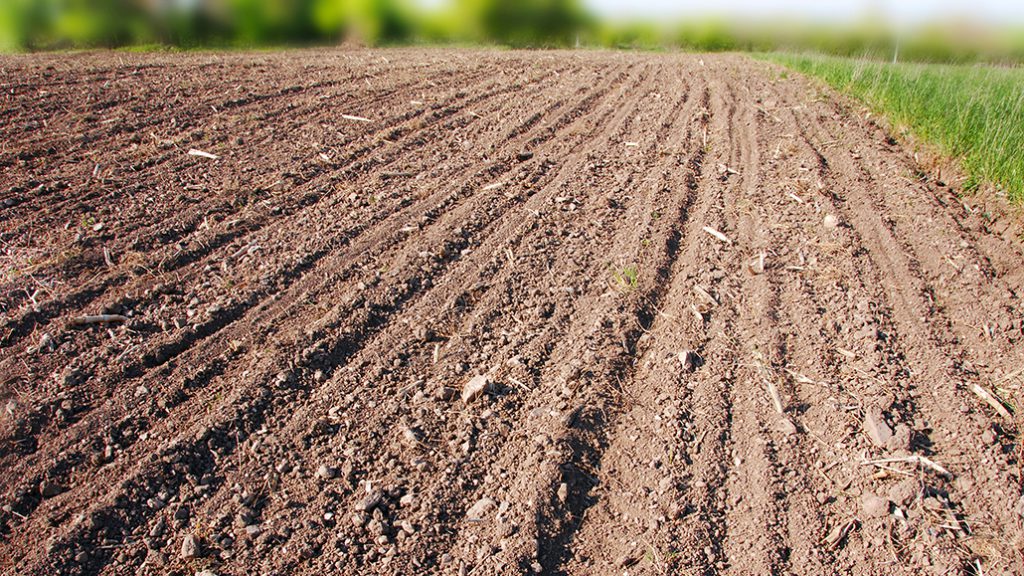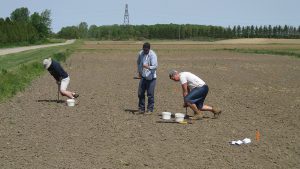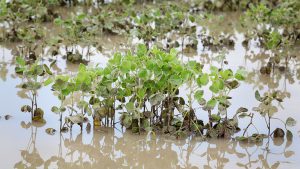Soil microbiomes
TRACKING CHANGES BELOWGROUND

CROP ROTATION IS an excellent way to create opportunities for improved soil health within a three-crop rotation. It can help promote the “right” biological community for subsequent cash crops to boost beneficial organisms and decrease pathogens without added input costs from inoculants.
Crops release different types of carbon and nitrogen compounds from their roots depending on the type of crop and growth stage. These compounds attract different soil bacteria and fungi. As crop residues are broken down, different groups of soil organisms are successively favoured, with population structures shaped by the biochemistry of the residues. Long-term crop rotations are known to increase both microbial richness and diversity. Structurally diverse soil biological communities are inherently more functionally diverse, providing a level of functional redundancy that renders the soil more resistant and resilient to stress events, including climate extremes.
Dr. Lori Phillips and the soils research group at Agriculture and Agri-Food Canada (AAFC)-Harrow are currently researching how long-term crop rotations, with or without a red clover cover crop after the wheat crop, affect soil biological health. Each type of crop influences belowground biological communities in different ways.
WHAT IS A MICROBIOME?
A soil microbiome is comprised of all the bacteria, fungi, archaea, and other microorganisms living in the soil, all of which interact to support healthy soils. A healthy soil microbiome can lessen the impacts of environmental stressors and can improve soil quality including facilitating crop-microbe interactions that enhance drought resistance and providing diverse biological communities that suppress pathogens.
Phillips’ research primarily focuses on whether soil microbiome communities can be managed or manipulated to better support soil health.
Plants lose up to 40% of their processed carbon through their root systems, which essentially feeds the biological communities around the plant roots. Different plants release different types of carbon compounds, and thus support different biological communities. Plant roots penetrate the soil and provide ‘root routes’ that different organisms can use, doubling as a transportation system for water soluble nutrients. When the plant dies, its roots are then broken down by different microbes, supporting successive biological communities.
Different management practices used for different crops, such as crop rotation, cover crops, fertilization, or tillage, also affects soil life. “Anything that we do to the soil to support crops will ultimately impact the soil microbiome,” says Phillips.
Currently, researchers have limited ability to define what a good or a bad microbiome is for any given soil. According to Phillips, overall soil health is currently assessed by measuring different combinations of mainly physical and chemical indicators, which serve as proxies for biology. However, these measures are indirect, labour intensive, and expensive, and are highly dependent on environmental conditions at the time of sampling.
“We are working to develop new biological indicators that are cost efficient, amenable to large sample throughput, standardizable across different regions and management practices, meaningful in an agro-ecosystem context, and sensitive to variations in management,” says Phillips. “We are trying to define the normal operating ranges of a suite of molecular bio-indicators for microbiome functions.”
Crop rotations very clearly impact the presence and abundance of bacteria and fungi in soil, and greatly enhance overall biodiversity and soil health. “Typically, increased biodiversity aboveground equals increased biodiversity belowground,” says Phillips.
Phillips says this research will identify the keystone soil organisms, functions, and diversity indices that consistently associate with crop productivity and other measures of soil health, quantify the normal operating ranges of these key soil microbiome indicators in a Brookston clay loam, and determine if previous crops modify soil biotic capacity for subsequent crops.
“Ideally, we want to know what microorganisms or indicators indicate a healthy soil — but it’s a work in progress. The more knowledge we have on how soil ecosystems work, the better able we will be to effectively manage that ecosystem.”
This project is funded by Agriculture and Agri-Food Canada. •




















